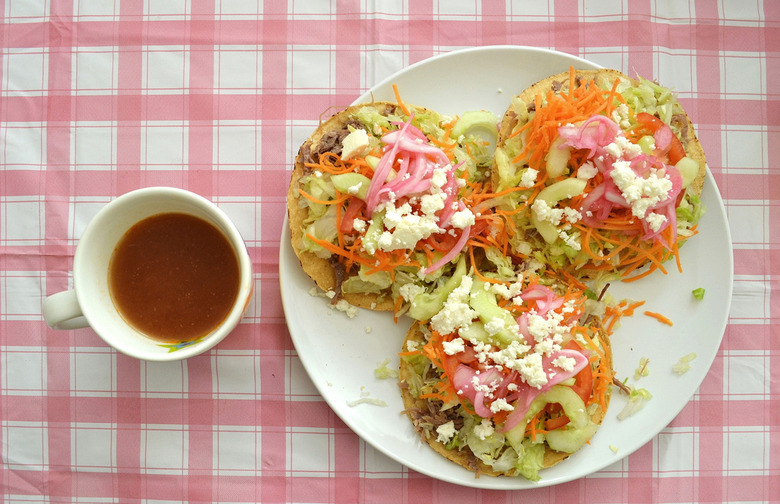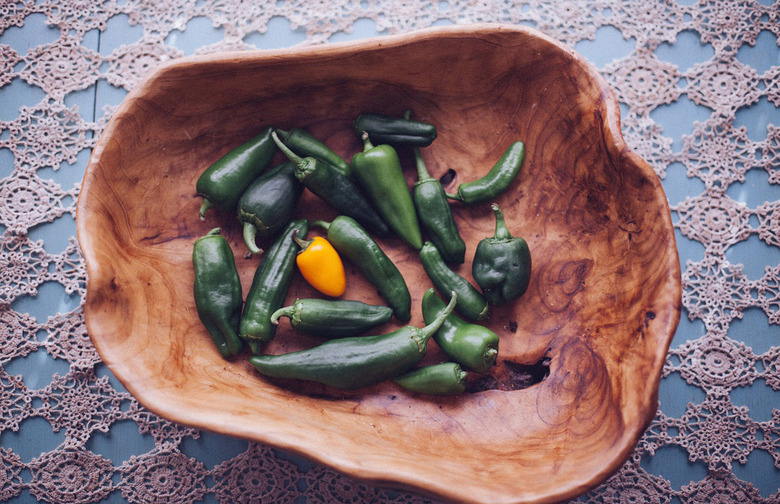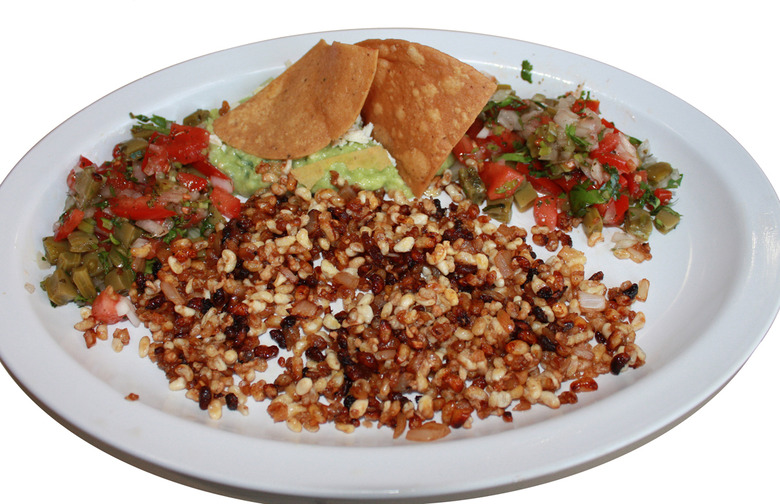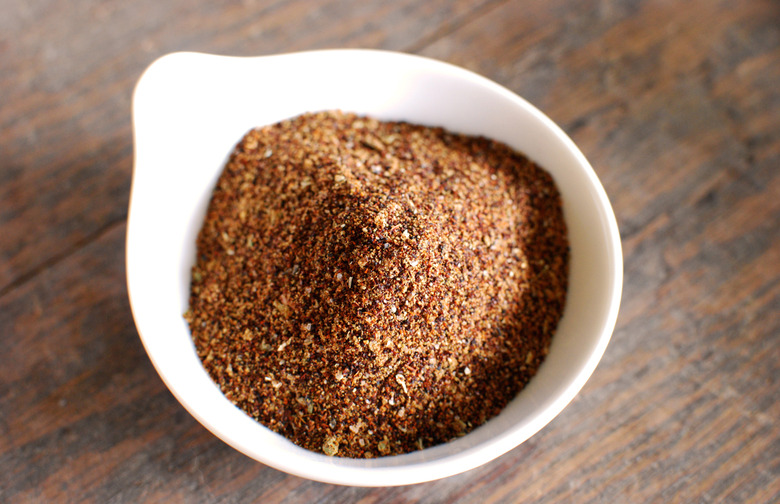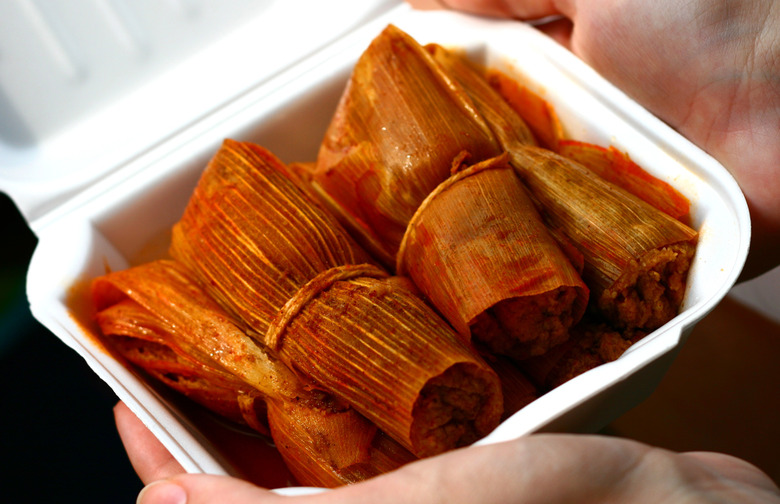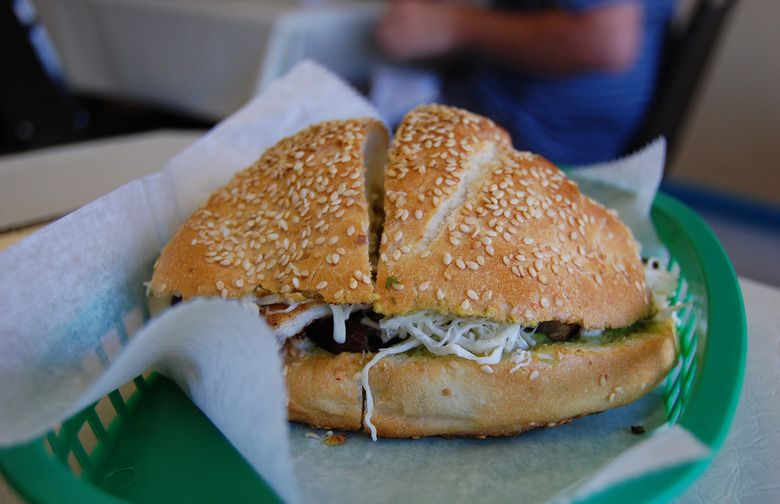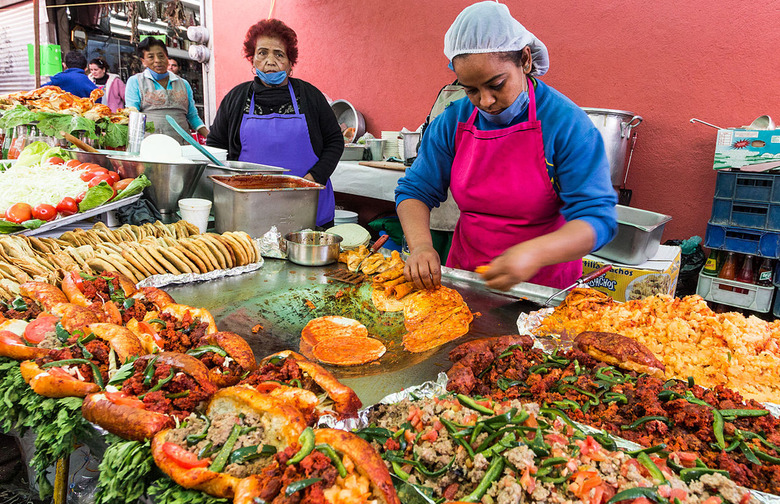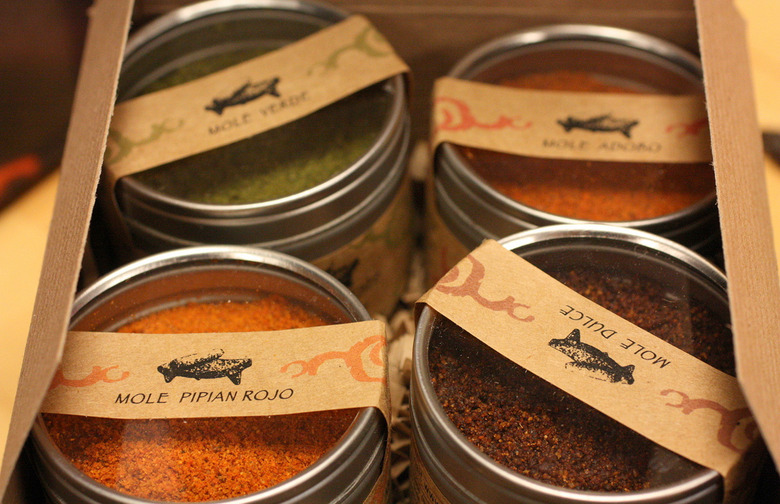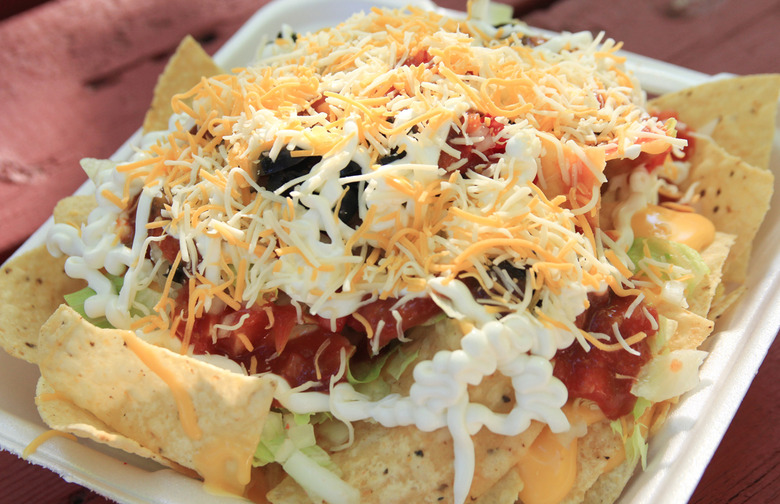10 Things You Didn't Know About Real Mexican Food
Once you understand the beautiful foods of the seven regions, you will know what dishes to seek out from the north, the northern and southern Pacific coasts, the south, the Gulf, the Bajio (north-central Mexico), and central Mexico. We suggest you start with Oaxaca, the Bajio, and central Mexico, since they have intact cooking traditions that have largely resisted being overrun by the influences of other cuisines.
Ancient Traditions
If you want to eat like an ancient Toltec or Mayan today, you can still munch on native foods that were part of their everyday diet, like mushrooms, avocados, tomatoes, chiles (more than 90 different species), cassava, guava, sweet potatoes, beans (black, navy, pinto, etc.), squash and the dried seeds, chia, yucca, chocolate, turkey, duck, rabbit, venison, and seafood. Recipes, which are so ancient they defy time, include these ingredients in hundreds of ways, like refreshing salsas, stews, soups, casseroles, tamales, and more.
Insects
Long before the bleat of a sheep or cluck of a chicken was ever heard in Mexico, natives ate more than 200 kinds of lean, high-protein, tasty insects. Crickets, wasps, honey bees, cicadas, moths, worms, butterflies, and other bugs are still served in strongholds of traditional cuisine in the states of Oaxaca, Puebla, Hidalgo, Chiapas, and Guerrero. Chapulines, or crispy dried grasshoppers, are a national snack found everywhere in Mexico, where they are smothered in chile powder and fresh lime juice. In Puebla, in Central Mexico, escamoles, or ant larvae, make their annual appearance in March and are hastily combined with guacamole and served in tacos.
Imports
When the Spanish ships landed in Mexico, their holds were filled with provisions that added variety and a host of new spices to the local diets. Sugar cane, which came from Asia, and wheat from Europe, made it possible to develop desserts and breads, while the arrival of chickens, pigs, cattle, goats, and sheep led to the production of meat and cheese dishes previously unseen. Other ingredients included pineapples and potatoes (from South America), as well as garlic, onions, oranges, limes, nuts, carrots, bananas, eggplant, lentils, peaches, and melons. Native cooks' use of imported spices like cinnamon and coriander, combined with cacao and turkey, helped create iconic moles and other sauces.
Essential Ingredients
The use of lard is part of what makes Mexican cuisine authentic, and without it — and various spices — staples like tacos, tamales, enchiladas, and tostadas would be bland. We recommend you follow Mexican culinary authority Diana Kennedy's lead about concerns over the judicious use of lard. As she says, "To hell with lard, you know, it's great...you have all these good ingredients and then you eat less, that's my theory."
Grains
Although Cinco de Mayo celebrates the end of French occupation under Archduke Ferdinand Maximilian in the 1800s, the imperialists' influence also helped introduce cream soups, mustard sauces, and — most importantly — bread and pastries, which now account for over 1,000 different types of sweet and savory baked goods and desserts. To see the finest examples of wheat-based fusion breads, look no further than street food. Sandwiches are made with a range of breads that include rolls, called bolillos (slightly crusty like Cuban bread), teleras and pan basos (which are soft and made with lower quality flour), and cemita, an eggy brioche bread. The lone crunchy bread is pan de agua, which is as close to a baguette as you will find. For your sweet-tooth craving, look for pan dulce, or sweet bread choices like conchas.
Snack Time
Mexicans are mad about antojitos, or snacks, and the place with the most incredible variety is Mexico City. On every corner, vendors sell tamales, tacos, hot and cold tortas (Mexican sub sandwiches), and other stuffed or topped snacks that are fried, grilled, or steamed. Cold tortas, only for lunch, are made with sub-shaped telera rolls and are hearty fare slathered with refried beans, layered local ham, cold cuts, cheese, or fish, and garnished with lettuce, tomato, and pickled jalapeños. Meat-lovers can head to Mérida, in the Yucatán, for a juicy cochinita torta — a bolillo roll stuffed with cochinita pibil, or slow-roasted pork mixed with achiote paste and sour orange juice, and garnished with pickled onions and spicy salsa.
Sauces
Although Mexican cooks are frugal, their food is layered with aromas, textures, and essences of herbs, spices, and other ingredients that are central to the cuisine. The culinary catalogue of sauces is so vast that any classically trained French chef would find the diversity daunting. Perhaps one of the most famous sauces of all is mole, which reaches its zenith in Oaxaca. Oaxacan cuisine is famous for its seven different moles that include the revered negro (black) mole along with chichilo (smoky stew), amarillo (yellow), coloradito (little red), manchamanteles ("tablecloth stainer") rojo (red), and verde (green). If moles are too rich for your palate, consider alternatives like the condiments found in Chiapas that are prepared with hot, searing chiles like chile de siete caldos, or salsas from the Yucatán that use bitter oranges, avocados, tamarind, and plums.
Dairy
A dead giveaway that a dish isn't really Mexican is the aggressive use of cheese and sour cream on tacos, quesadillas, tostadas, and tortas — except when you are in El Norte, or the northern reachjes of the country. While the rest of Mexico uses cheese and dairy in sparing amounts — if at all — El Norte's vast ranches, cattle and goat herds, and ranch culture mean the cuisine features grilled beef and goat dishes (including more than 40 different kinds of flour tortillas) and has Mexico's most diverse cheese-making traditions. An authentic meal here could include aracheras (fajitas made with grilled beef); grilled cabrito, or baby goat; and a range of cheeses such as queso fresco (fresh farmer's cheese), creamy and semi-soft queso menonita from Chihuahua, or the original Monterey Jack, called ranchero.
Art
Art has a way of working its way into every aspect of life in Mexico, and this includes food, especially the elaborate candies and breads found in every region. The tastes and tones are as bright, spicy, and original as the rest of Mexican cuisine, and none are as special or decorative as calaveras de azúcar, or sugar skulls. Unlike European fears regarding death, Mexicans embrace it and honor their dead by celebrating Día de los Muertos, the Day of the Dead, with dozens of large and small skulls. Alters, gravesite parties, and rainbow-hued displays of elaborately decorated skulls and other candies are all part of the Mexican traditions that celebrate the life of those who have passed on, and other decorations include skeletons dressed in finery, miniature coffins, and festive breads baked with bones on the crust.
